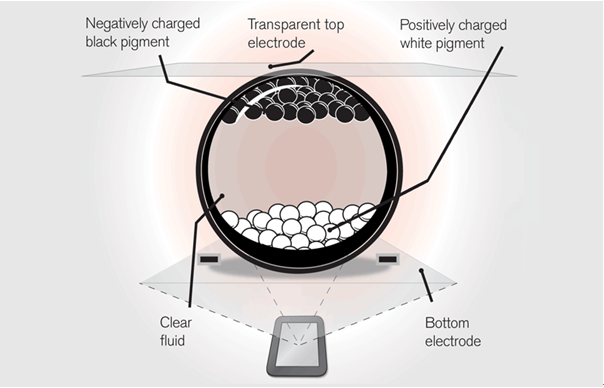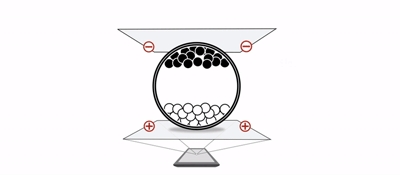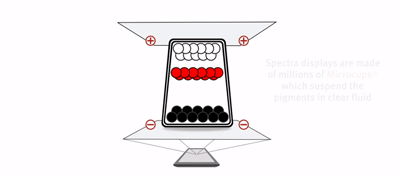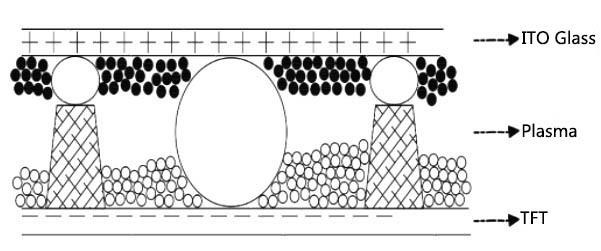How do E Ink displays work?
- Categories:Blog
- Author:
- Origin:
- Time of issue:2020-06-15 15:45
- Views:
(Summary description)
How do E Ink displays work?
(Summary description)
- Categories:Blog
- Author:
- Origin:
- Time of issue:2020-06-15 15:45
- Views:
Just like traditional paper can be made into everything, E Ink Display is proving to be a means on which incredible and all-round projects can be realized. E Ink Display’s amazing characteristics such as excellent visibility even with sunlight shining on it, paper-like readability and extremely low energy consumption make it perfect for all sorts of amazing products, from phones, accessories, shelf display, thermostats to digital signs.
But just what exactly is electronic paper and how does it work?
WHAT EXACTLY IS ELECTRONIC PAPER?
Electronic paper goes by many names: e-paper, sometimes spelled as ePaper, electronic ink, also e ink (the company that manufactures it) and the newly launched DES Display. All of these names describe the same thing: a technology that mimics the appearance of normal ink on paper. Simply put, imagine you take a pen and jotted down something in a notebook. The clear, well defined lines of your text will have the same crispness and high-readability as images shown on an electronic paper display.
But why is that, and how does an electronic paper display actually display an image? And what makes it so different from all the other high-definition screens out there?
MILLIONS OF TINY INK CAPSULES
To answer these questions we should start at the very core of e ink technology: small capsules filled with a clear fluid containing teeny-tiny particles, each about the width of a human hair.
For e-ink display, each E Ink is made up of millions of these capsules in a thin film, with the particles inside the capsules of different colors and different electric charges. Electrodes are placed above and below the capsule film. When a positive or negative electric field is applied to an individual electrode, the color particles with the corresponding charge will move either to the top or bottom of a capsule, making the surface of the E Ink Display appear a certain color.
 |
Capsules filled with negatively and positively charged particles color the surface of an EPD when an electric charge is applied.
In the most basic embodiment of an e-paper screen, the particles inside an e ink capsule will be either black or white. The white particles carry a positive charge and the black particles a negative one. If the electric charge applied is negative, then the negative black ink particles will be repelled to the top of the capsule and color the surface of the display black in that spot.
This is why an E Ink Display will sometimes also be called an electrophoretic display, or EPD for short: it simply means that it functions on the basis of the motion of dispersed particles in a fluid under the influence of an electric field.
TWO KEY POINTS THAT MAKE A WORLD OF DIFFERENCE
The way e ink works means that it differs from other displays in two key points: it is both bistable and reflective.
WHAT’S ON THE SCREEN IS HERE TO STAY
Just like the sketch in your notebook will remain there until you erase it, the content displayed on an EPD will hold a static image, even without electricity.
The way E Ink Display works means that it differs from other displays in two key points:
An electronic paper screen reflects light from the environment so it doesn’t use its own but it can be applied and only consumes power when you change the content on the display.
This is possible because electronic paper technology is bistable, bistable is an electronic circuit which has two stable states. The tiny particles of an EPD will either be reflective or non-reflective (that is, black or white). In more advanced e-paper screens these bistable particles will also be provided in many levels of grayscale; energy is needed to put the color particles in their place, but once they are there, they stay there.
In practice this means that an EPD will be consuming power only when the content on it is changing – for example when you change the price of a product, or when the content of an e-paper parking sign changes from ‘Reserved’ to ‘Vacant’.
The rest of the time the display will simply show the image you want it to, with or without a power source and without having to constantly refresh the content shown (an LCD screen, for example, will have to refreshed about 30 times per second). This makes electronic paper extremely energy efficient, meaning that it can run for weeks on a single battery or even on alternative power sources.
Two Pigment Ink System
The two pigment electronic ink system is made up of millions of tiny microcapsules, each about the diameter of a human hair. Each microcapsule contains negatively charged white particles and positively charged black particles suspended in a clear fluid. When a positive or negative electric field is applied, corresponding particles move to the top of the microcapsule where they become visible to the viewer. This makes the surface appear white or black at that spot.
 |
For more Two Pigment E-ink e-Paper product details, you can click here for learning more.
Three Pigment Ink System
We can also offers a 3-pigment ink system in a microcup structure. This ink was engineered specifically for Electronic Shelf Labels (ESL). It works similarly to the dual pigment system, in that a charge is applied to the pigments, and to a top and bottom electrode to facilitate movement. However, instead of the use of microcapsules, this system utilizes Microcups, which are filled with the liquid and sealed.
 |
For more Three Pigment E-ink e-Paper product details, you can click here for learning more.
DES System
DES display module adopts a new display structure which is completely different from the current micro-cup and micro-capsule structure. The structure forms a layer of cofferdam structure on the surface of the TFT by forming a cofferdam around the periphery of a single pixel electrode, and the bank covers the source and gate lines on the TFT. The patterned structure is characterized in that each pixel electrode is surrounded by a cofferdam, the microstructure is not visible on the front side, and the number of layers is reduced, thereby obtaining the higher definition and resolution display effect.
 |
For more DES e-Paper product details, you can click here for learning more.
Scan the QR code to read on your phone
logo
Contact
copyright
©2007-2025 DALIAN GOOD DISPLAY CO., LTD. All Rights Reserved. ICP08000578-1







